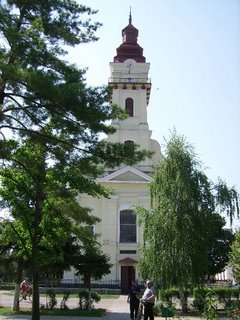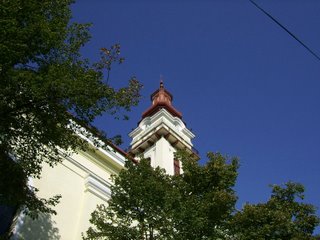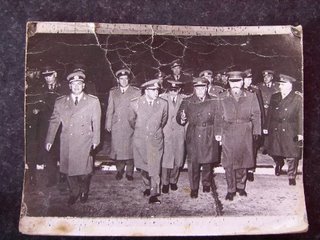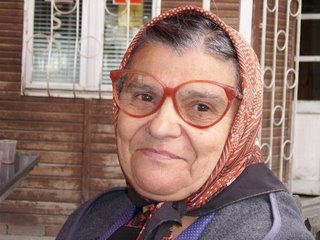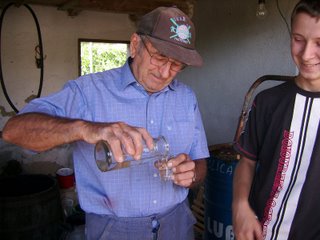It is about a mile or one and a half kilometers
from the center of town.
There is a border crossing and it is a pretty busy
place. There are regularly big trucks transporting goods
and many tourists passing through town.
The main road ... as you can see in the picture below
is actually the beginning of the international road. With
Romania joining the European Union they are plans to
make this road into a larger highway that will cross the
country from here in Nadlac to the Black Sea city of
Costanta.
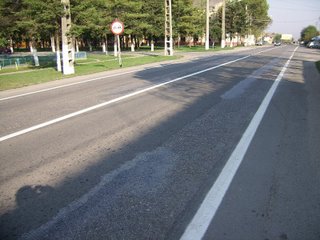
In the above picture you can see the road that is coming
from the border. If you go down this road by car you
will be at the border in about 5 minutes. Also there
was a little excitement as you can see freshly painted
lines on the road. That happened just this week.
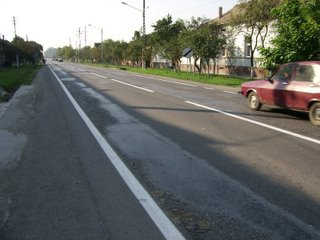
In the picture above you see the road that leads into
Romania. All you need is approximately 900 kilometers
and 14 hours to Costanta. The next biggest city that you
will encounter is about 45 kilometers and it is called Arad.
You can see a burgundy car on the right hand side.
It is really more like you can see about 75% of a car.
That car is the famous 'Dacia' built in Romania. It was
exclusively a Romanian built car but now it is in partnership
with Renault. I am not sure exactly when but I think that
it has been 5 or 6 years since the merger. I will try and
create an article about the Dacia soon. It is one of those
staple oldies that just keeps on going. People criticise it
as kind of junky but those things just keep running.
Again with the European Union coming there is going to
be changes. In Nadlac one of the big changes will be
concerning the customs entry station. I have been told that
in a few years they will phase it out. That means that a lot
of people making a living from it will be out of jobs. A lot
of the Rroma (Gypsy) population make a living there. So
it will be interesting to see what they do when the border
station closes. I guess now is the time for them to think
about options. I don't know if I will be here when that
change occurs but if I am I will fill you in on how it affected
especially the Rroma.
